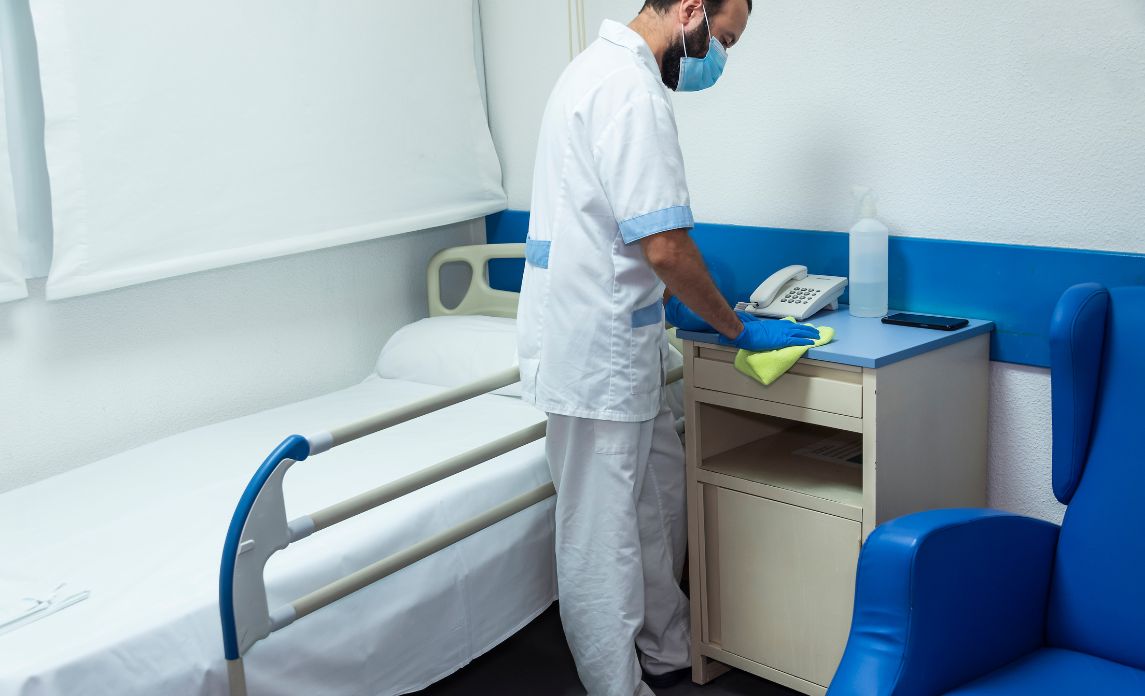Cleaning healthcare facilities is critically important for several reasons. For one, it’s crucial for infection control and patient safety. All health facilities, but especially hospitals and clinics, are by nature frequently visited by people who are vulnerable to diseases. By keeping their premises neat and sanitary, facility managers can reduce the risk of healthcare-associated infections in their establishments.
Other key reasons to keep healthcare facilities clean at all times include:
- patient confidence and satisfaction
- positive public perception
- staff safety
- compliance with regulations
- emergency preparedness
- equipment maintenance
- cost reduction
Overall, cleaning healthcare facilities is not just a matter of aesthetics but a fundamental aspect of patient care, infection prevention, and maintaining the trust of the community. Fortunately, there are cleaning service providers like Crewcare that specialise in healthcare cleaning. With their help, it’s much easier to maintain high levels of cleanliness in medical institutions.
That being said, there are certain situations that make healthcare cleaning more of a challenge. For example, the flu season usually causes an influx of patients that can then increase the risk of contamination and infection. In these situations, it’s crucial to employ a different management strategy to effectively manage the heightened demands of cleaning during this challenging period.
Here are some key steps to follow to ensure the cleanliness of any healthcare facility during critical periods like the flu season:
Enhanced Cleaning Protocols
During the flu season and similar situations (e.g., public health emergencies), it’s important to implement enhanced cleaning protocols. This may involve more frequent cleaning cycles, using hospital-grade disinfectants, and focusing on thorough disinfection of surfaces.
Increase Cleaning Staff
Consider hiring temporary cleaning staff or redistributing existing staff to meet the increased workload. You can also cross-train employees from other departments in basic cleaning and disinfection techniques to provide extra support when necessary.
However, one of the best solutions is to discuss additional cleaning needs with the cleaning company hired by the establishment. Ask for extra staff to be deployed during key hours, increase the frequency of cleaning, or both. While this may entail additional costs, the money you pay is worth your peace of mind.
Identify Areas for More Frequent Cleaning
There are certain areas within a healthcare facility that see more traffic than others. Identify these areas and prioritise them for frequent cleaning and disinfection.
Some examples of areas that need additional attention are waiting rooms, patient rooms, and restrooms. Make sure to include common touchpoints like doorknobs and elevator buttons.
Proper and Frequent Hand Hygiene
Encourage healthcare workers to practise rigorous hand hygiene by promoting compliance with handwashing protocols. This can significantly reduce the risk of cross-contamination. If necessary, conduct refresher lectures about proper hand-washing techniques:
- Wet hands with running water.
- Apply soap and lather the back of the hands, individual fingers, the spaces between the fingers, and under the nails.
- Continue lathering for at least 20 seconds.
- Rinse hands thoroughly under running water.
- Dry hands using a paper towel.
For quick clean-ups, place containers of hand sanitiser in strategic areas like reception counters, waiting areas, inside bathrooms, and near patient room doors.
Isolation and Cohorting
During flu season and other critical health situations like COVID infections, it’s best to adhere to strict isolation and cohorting protocols to prevent the spread of viruses. Isolation is crucial to prevent contagious patients from infecting others. During triage, it’s also important to implement cohorting (grouping patients with similar conditions or symptoms together).
Use of Personal Protective Equipment (PPE)
When cleaning and during critical situations, ensure that staff and visitors wear appropriate PPE. These include masks and gloves, in areas with a high risk of flu transmission. Proper PPE management is crucial to reducing the risk of contamination.
Stockpile Cleaning Supplies
Because of the increased workload of both the hospital staff and the cleaning crew, it’s best to stay on top of your stock of cleaning supplies. Maintain an adequate reserve of items such as disinfectants, gloves, masks, and cleaning equipment, to meet the demands of flu season. Also, establish a contingency plan for restocking to prevent shortages.
Training and Education
Conduct regular training sessions to educate cleaning staff on proper cleaning and disinfection techniques, as well as infection control protocols. Provide easily accessible resources and materials to reinforce these practices.
It’s also helpful to educate patients and their families about the importance of hand hygiene and respiratory etiquette to reduce the risk of infection. Display informative posters and distribute informational materials throughout the facility.
Frequent Communication
No matter the circumstances, open communication is paramount among healthcare workers, cleaning staff, and other personnel in the facility. Encourage the reporting of issues related to cleanliness, safety, and the availability of supplies to ensure prompt resolution.
Frequent communications also fosters collaboration among different departments within the establishment. When everyone is on the same page, it’s easier to coordinate efforts and share best practices to avoid the spread of disease.
Regular Audits and Inspections
Conduct regular audits and inspections to ensure that cleaning protocols are being followed correctly. If there are deficiencies, address them promptly to maintain high standards of hygiene. Also, remember to maintain detailed records of cleaning and disinfection activities whether it’s the flu season or not. This process can help track progress, identify areas of improvement, and ensure compliance with regulations.
Flexibility in Scheduling
Be flexible in cleaning schedules to adapt to the evolving demands of flu season. This may require extending cleaning hours or reallocating resources to address areas with the highest need.
By implementing these strategies and maintaining a proactive approach to cleaning and infection control, healthcare facilities can effectively handle the increased workload during flu season, reduce the risk of flu transmission, and ensure the safety of patients and healthcare workers.


